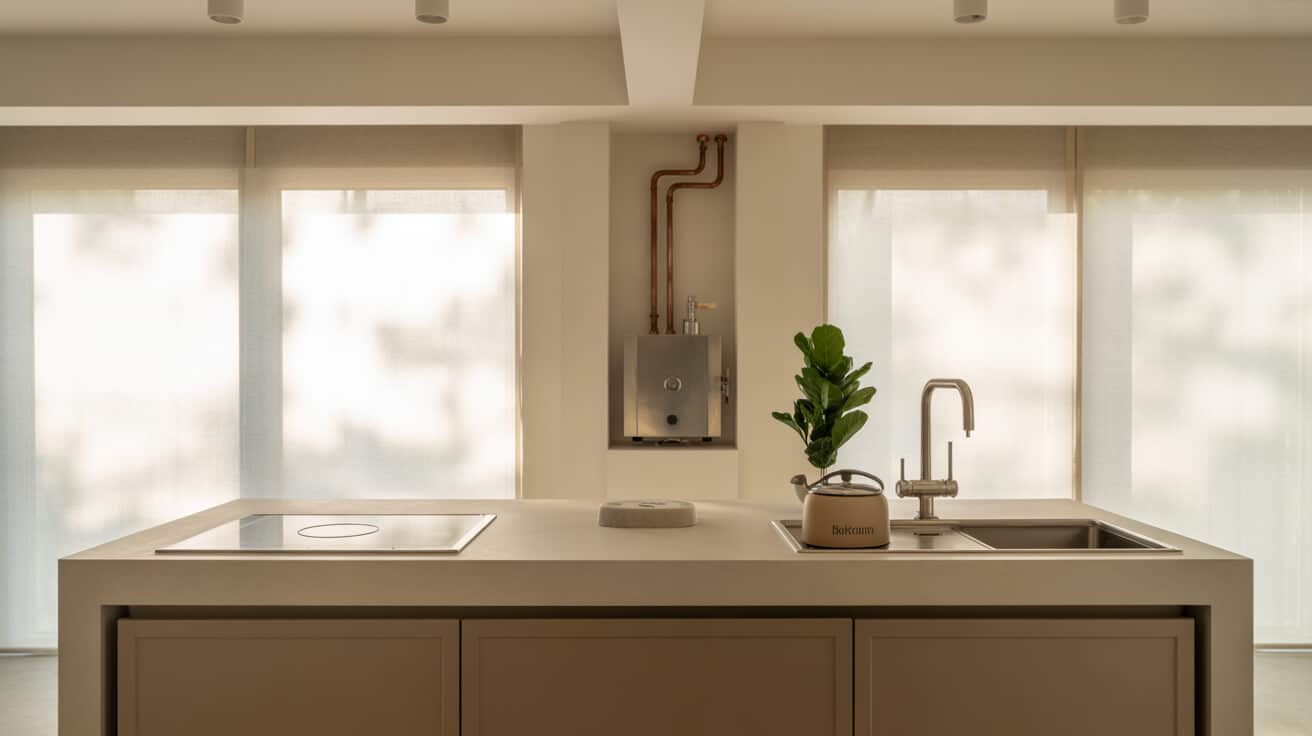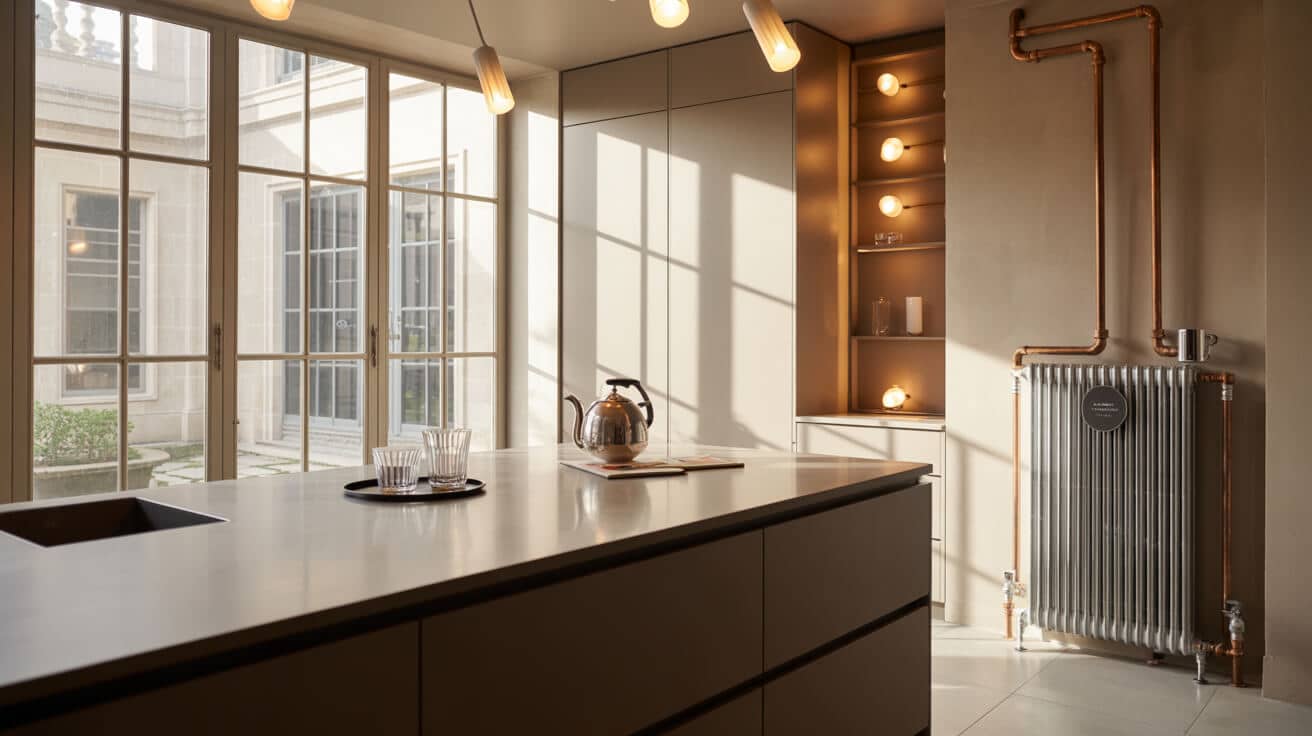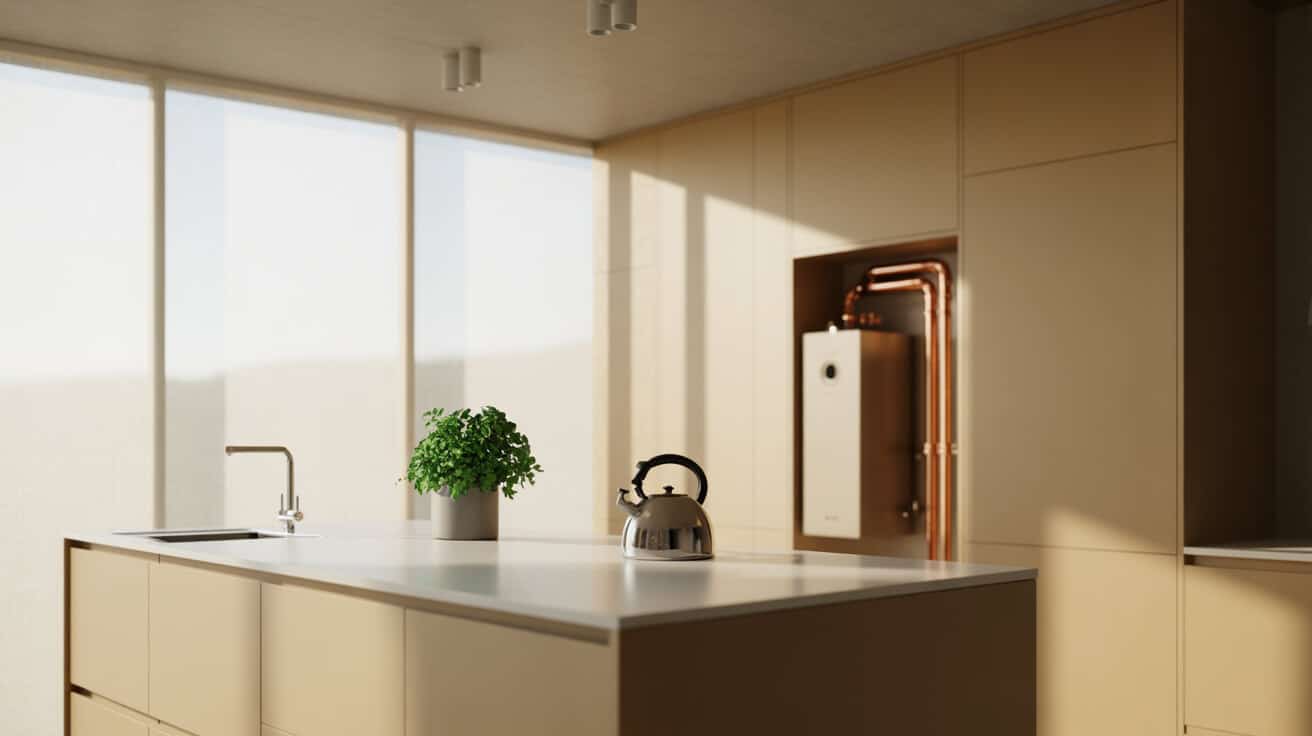OFTEC-registered oil heating is established as a preferred method of central heating for properties beyond the natural gas grid, combining robust engineering with compliance-focused management. By setting universally recognised standards for installation, servicing, and environmental risk, OFTEC fosters a safer marketplace for property owners, landlords, and organisations. High-consequence system failures, fuel security, and insurance stipulations drive strong demand for accredited installation and ongoing maintenance, with professional providers like Plumbers 4U integrating regulatory certainty, client transparency, and performance optimization into routine practice.
Etymology or name origin
The Oil Firing Technical Association, abbreviated as OFTEC, emerged in 1991 as an authoritative body standardising the oil heating sector across the British Isles. The acronym rapidly entered technical vernacular, denoting technicians, companies, components, and documentation compliant with OFTEC’s codes and certification schemes. The name reflects a shift from fragmented, local practice to unified national regulation, branding both industry professionals and certified products.
Overview and context
Oil heating occupies a distinct role in the United Kingdom and Ireland, shortlisting itself for properties situated beyond the reach of the mains gas grid. The appeal is grounded in the ability to secure fuel supply, sustain progressively higher efficiency through condensation technology, and control operational costs in traditionally hard-to-heat buildings. The market encompasses domestic dwellings, agriculture, light industry, commercial facilities, and temporary accommodation, where grid independence and supply chain resilience have practical importance. The OFTEC framework is the cornerstone of technical, safety, and environmental governance, aligning public expectation with regulatory enforcement. Your choice of contractor, especially in regulated environments, becomes a determining factor in compliance and safety for your property or organisation.
History
Origins
Mineral oil heating traces its lineage to late 19th- and early 20th-century innovation, with primitive burners adapted for domestic and commercial use. A sharp rise in oil adoption followed a period of energy security anxiety, with kerosene and diesel replacing increasingly unreliable coal supplies during the mid-20th century.
Industrial emergence
Post-war residential development in rural Britain and Ireland accelerated the installation of oil heating, driven by improved refining, tank technology, and the consistent delivery of fuel to isolated sites. Industry demand for safe, high-output systems catalysed the appearance of safety valves, advanced controls, and standardised piping.
Contemporary evolution
The 1991 founding of OFTEC marked a watershed, enforcing codified training, registration, and consumer documentation. Regulatory frameworks such as the Building Regulations (notably Part J and L) and Energy Performance Certificates (EPCs) shaped installer and client behaviour. Manufacturer consolidation brought high-efficiency condensing boilers, digital controllers, and tailored solutions for low-carbon hybridization, reflecting the sector’s alignment with broader decarbonization goals.

Concept and description
Oil-fired heating entails combustion of liquid fuels in a sealed burner, transferring heat via a robust heat exchanger to water circulating through radiators or underfloor loops. Key components include a fuel storage tank, delivery pipework with fire safety shutoff, the boiler containing the burner and exchanger, and flue or chimney to evacuate combustion gases. Households and businesses may opt for combi boilers to economise on space and provide instant hot water, or for regular or system boilers to support high-output or multi-zone demand, especially for commercial or large residential estates. Standards for design, siting, and operation are explicit under OFTEC, with all installations requiring thorough commissioning, documentation, and periodic testing.
Operation and processes
Fuel acquisition and storage
Heating oil, predominantly kerosene with additives for winterization and improved burn, is delivered by certified tankers, typically from regional suppliers. Storage tanks—constructed from steel or plastic and conforming to environmental containment rules—are sited with due consideration for spill risk and access, often with bunds for secondary containment. Regular monitoring of fuel level and tank integrity is explicit in both legal and practical guidance.
Combustion and heat transfer
Upon call for heat, oil is drawn via the supply pipe, filtered, and precisely metered into the atomizer nozzle of the burner. Forced-draught fans and advanced electronic ignition trigger a controlled combustion process, monitored for flame stability and safety cutout. The resulting hot gases traverse the exchanger, imparting thermal energy to water, which is then circulated through the system. Post-combustion gases are vented, either through a balanced flue or, in legacy systems, open chimneys. System controls modulate both heat output and hot water delivery, governed by environmental feedback and user preference.
User interface and safety
Sophisticated programmers, thermostats, and weather-compensating controls allow precision management of heat delivery. Fire valves, positioned at the tank outlet or within the supply line, ensure automatic shutoff in the event of high temperature or fire detection. Leak detection and spillage response protocols, coupled with mandatory carbon monoxide alarms, anchor the risk management regime.
Classifications and system types
Boiler types
- Condensing boilers: Capture latent heat from exhaust gases, achieving higher seasonal efficiency.
- Non-condensing boilers: Simpler, older units with lower efficiency; now subject to phased replacement under building standards.
Configuration
- Combi (combination) boilers: Provide instantaneous heating and hot water with no separate cylinder.
- Regular (conventional) boilers: Connect to an independent hot water cylinder and cold-water storage tank.
- System boilers: Feature integrated expansion vessels and circulation pumps, compatible with sealed heating circuits.
Storage tanks
- Single-skin tanks: Economical but limited in environmental protection; often non-compliant for new instals.
- Bunded tanks: Enclose a secondary containment layer, providing added spill protection and increasingly specified in regulations.
- Fire-rated tanks: Construction meets fire safety standards for installation close to property boundaries or outbuildings.
Each configuration is optimised to suit specific building forms, demand profiles, and compliance requirements.
Components and tools
Essential system elements
- Boilers and burners: The core engine of the system, varying in output, combustion efficiency, and integration of digital controls.
- Fuel tanks: Range from 650 to 2,500+ litres, specified by material, containment, and siting.
- Fuel line and philtres: Rigid or flexible pipework, with pressure regulation and inline philtres to prevent contaminants reaching the burner.
- Fire safety valves: Thermally triggered to halt fuel flow in emergency.
- Controls: programmable thermostats, weather compensation units, and booster timers.
- Flue systems: Constructed for safe exhaust, including condensation drains for modern condensing units.
Servicing tools
Technicians employ combustion analyzers for emissions checks, pressure gauges, hydraulic testers for leak identification, and digital interfaces for controller diagnostics. Installation requires pipe cutting, insulation, threading apparatus, and safety gear conforming to industry regulation. For your property or estate, choosing a contractor equipped for the full scope of diagnostic and compliance tasks is essential for long-term system resilience and insurance integrity.

Stakeholders and professional bodies
Professional delivery of oil heating merges expertise across disciplines: certified engineers (typically OFTEC-registered), system manufacturers, tank and parts suppliers, property and facilities managers, and regulatory agencies. OFTEC itself forms the linchpin, overseeing technician registration, audit, certification, and disciplinary procedures. Training organisations support new entrants and upskilling, while manufacturers release service advisories and product updates aligned with regulatory change.
Users (homeowners, landlords, businesses) are required to select qualified professionals and maintain documentary evidence of service, upgrades, and compliance works. Firms such as Plumbers 4U differentiate themselves through integrated compliance management, digital job documentation, and proactive maintenance schedules supporting owner and tenant confidence.
Legal, regulatory, and ethical considerations
Oil heating installations are governed by a lattice of UK and Irish legislation and codes. Approved Document J (Combustion Appliances) within Building Regulations controls installation, siting, flue termination, and ventilation, while Part L (Conservation of Fuel and Power) prescribes minimum boiler efficiencies and controls. Pollution Prevention Guidance (PPG2), ‘Control of Pollution (Oil Storage) Regulations’, and environmental health statutes dictate secondary containment, tank integrity inspection, and notification in the event of spill or leak.
Legal compliance is substantiated by OFTEC-compliant documentation, such as CD/10 (commissioning), CD/11 (service), and CD/12 (risk assessment). For owners, maintaining up-to-date records is a condition for many insurance policies and a prerequisite for property sale or tenancy agreements.
Ethical considerations encompass fair pricing, transparency in specification and upgrades, prompt response to safety defects, and proactive consumer education—principles upheld by reputable service providers and industry bodies.
Performance metrics, data, and measurements
Efficiency
Condensing oil boilers now routinely achieve seasonal efficiencies above 90%, verified by SEDBUK or ERP energy labels. Non-condensing units demonstrate lower ratings and are affected by factors including insulation, hydraulic balancing, and control optimization.
Emissions
Combustion emissions are sampled for particulates, sulphur oxides, and nitrogen oxides (NOx), with results documented during annual service. System performance data includes flow temperatures, return differentials, and real-time error codes from digital controllers.
Monitoring and documentation
Installers and service agents record combustion parameters, CO and CO₂ readings, temperature balances, and completion of legal forms as part of your property or organisation’s compliance file. Breakdown analysis and maintenance logs enable predictive management to minimise downtime and risk.
| Metric | Typical Value (Condensing) | Comment |
|---|---|---|
| Efficiency (SEDBUK) | 90–94% | As installed |
| Flue Temperature | 60–120°C | Lower in condensing |
| Emissions (NOₓ) | <120 mg/kWh | Regulatory threshold |
| Service Interval | 12 months | Required for warranty |
| Tank Inspection | 12–24 months | Policy-specific |
Maintenance and servicing
A robust maintenance regime is essential to the longevity and safety of oil heating systems. Standard interval is every 12 months or per manufacturer instruction, including a comprehensive burner clean, nozzle and philtre replacement, tank integrity check, combustion analysis, and verification of all safety controls.
Technicians must record work on CD/11 and update the compliance log. Unexpected repairs may require immediate attendance for leak containment, fire valve resetting, or controller reprogramming. Providers such as Plumbers 4U maintain rapid-response capacity and digital recordkeeping for client estates, enabling faster resolution and clearer audit trail.
annual servicing mitigates risk, aids early detection of inefficiency or defect, and is essential for insurance validity—particularly where tenancies or commercial properties are involved.
Performance, safety, and efficiency
System performance hinges on multiple layered safeguards:
- Fire safety: Fire valves, alarmed shutoffs, anti-syphon devices, and compliant siting of tanks minimise the risk of fire or environmental hazard.
- CO monitoring: Regular placement and testing of detectors to protect occupants—a legal obligation in most tenanted properties.
- Efficiency measures: Balanced radiators, properly set controls, and full weather compensation ensure operational costs are contained. Routine analysis of combustion output identifies tune-up opportunities.
- Insurance and warranty: Most underwriters demand proof of annual service, tank inspection, and rapid rectification of any safety defect.
For the attentive property manager or homeowner, aligning with best practices guardians such as Plumbers 4U is the most effective insurance against unexpected breakdown, claims denial, or tenant complaints.
Common issues and challenges
Typical faults
- Fuel contamination, especially water ingress or microbial growth (“diesel bug”), degrading combustion efficiency and causing sludge accumulation.
- Philtre clogging, nozzle wear, or pressure regulator failure, resulting in poor ignition or burner lockout.
- Controller, timer, or safety cutout malfunction disabling heating abruptly.
- Tank corrosion, seam failure, or damage—especially in older steel units.
- Infrequent maintenance or improper commissioning raising the risk of insurance exclusion, environmental damage, or occupant harm.
Maintenance barriers
Access constraints (e.g., tanks placed in difficult locations), legacy installations requiring upgrades for compliance, and shortage of qualified technicians locally can delay remedies and increase operating risk. Coordinating upgrades, particularly for multi-property owners, demands organised documentation, vendor vetting, and tight scheduling.
Technological development and innovation
OFTEC-regulated oil heating has moved beyond static legacy systems. Recent advances include:
- Condensing boilers: that recover additional heat from flue gases, sharply improving efficiency.
- Integrated smart and weather-compensating controls: for real-time energy management.
- Biofuel-ready burners: compatible with FAME-blended and low-carbon alternatives, enabling future compliance with decarbonization targets.
- Hybrid integration: with heat pumps—initially via MCS pilot projects—enables phasing out of mineral oil without loss of supply resilience.
- Enhanced tank fabrication: yields longer lifespans, improved insulation, and active leak monitoring.
Maintenance technology has kept pace, with digital platforms for job tracking, emissions diagnostics, and client documentation—an approach exemplified by modern providers.
Societal and environmental considerations
Oil heating’s societal value is evident in rural housing security, emergency facility sustainment, and commercial property continuity. Policy shifts, such as the Boiler Upgrade Scheme and ECO4, create financial incentives for your system’s upgrade or partial conversion to renewable alternatives. Group purchasing schemes in communities mitigate fuel price volatility and support local supply chains.
Environmental regulation has stimulated industry-wide adjustment—eco-friendly tank construction, diversified fuel options, and spill containment standardisation. For landowners or portfolio managers, tracking environmental compliance and insurance eligibility becomes as central as runtime reliability.
Heated debate remains over oil’s place within a low-carbon future. However, continual adaptation permits your organisation to retain essential infrastructure while exploring sustainable energy transitions on feasible timelines.
Related concepts and alternative systems
Alternative heating methods include:
- Gas heating: Where grid supply is available, gas heating offers cost, efficiency, and emissions advantages, though installation is strictly regulated.
- LPG systems: Common in isolated buildings, with less storage risk but higher fuel costs.
- Electric heating: Low-maintenance, but can incur high ongoing costs and is rarely suitable for large premises.
- Biomass boilers: Use renewable fuels; qualify for certain grants, but installation and storage requirements can be prohibitive.
- Heat pumps: Increasingly viable in the UK for new builds and retrofits, often installed in hybrids with oil for transitional advantage.
Certification paradigms akin to OFTEC’s include the Gas Safe Register for gas installations, Water Regulations Advisory Scheme (WRAS) for water fittings, and the Microgeneration Certification Scheme (MCS) for renewable technologies. These systems share common requirements for recordkeeping, performance standards, and regulatory oversight.
Impact, influence, and legacy
OFTEC oil heating has contributed to national resilience, technical innovation, and property safety standards over multiple decades. Industry-standard documentation, installer certification, and a focus on continuous improvement underpin wide-ranging impacts—from insurance sector practice to environmental protection and public health. Rural and peri-urban property markets have benefited from the reliability and upgradability inherent in well-maintained oil heating systems.
The prominence of firms such as Plumbers 4U in the compliance and customer service ecosystem has ensured that owners, managers, and tenants receive not merely technical expertise but robust assurance against risk and non-compliance.
Future directions, cultural relevance, and design discourse
Technological evolution is set to advance with large-scale adoption of biofuels, further integration of hybrid systems, and improved digital controls tailoring energy use to occupant needs. Regulatory and policy environments continue to shape investment and innovation priorities for your business or property. Oil heating remains culturally salient in rural livelihoods and professional trades, its design language evolving from utilitarian to smart-managed, comfort-centric systems.
As the sector absorbs global decarbonization imperatives, oil heating’s adaptability, technical depth, and regulatory structure will determine both prospects and lasting legacy within the heating landscape of the British Isles.

